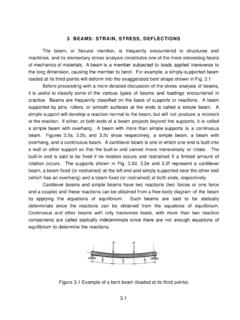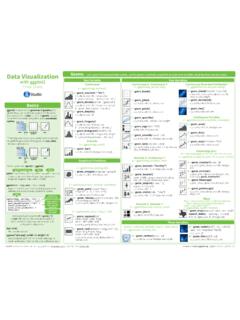Transcription of Understanding Generation X and Y Employees
1 Understanding Generation X and Y. Employees by Vistage Chair Tim Shaver (ghost written by Paul Diamond). For the past five years, the Vistage CEO Confidence Index, a quarterly survey of based executives' outlooks and habits, has reported that executives' primary business concern is recruiting and retaining talented Employees . In an Employees ' market, . companies must adjust their management and corporate culture to meet the needs of Generation X and Gen Y workers who collectively make up 58% of the workforce based on census figures. By taking time to understand what defines these generations and their work habits, an employer will be better able to reach these groups and, in turn, run a more productive business.
2 Gen X vs. Gen Y. Generation X is typically defined as those born between 1965 and 1977 and, 41 million strong, now account for 22 percent of the workforce. Gen Xers were latch-key kids that grew up with the Cold War, the collapse of the Soviet Union, the outbreak of AIDS. and the commercialization of subcultures on MTV. Gen X represents the largest group of entrepreneurs in history. Typically, a Generation X employee is highly educated, technology literate and fiercely independent (give them a project and leave them alone to do it). Though they have a strong work ethic, many Xers are committed to their families or lifestyles and expect significant workplace flexibility.
3 Though their moniker is slackers, Gen X works on average 3 hours-per-week more than Employees of comparable age did in 1977. (Source: Families and Work Institute of New York City). Gen Y, 76 million strong, (also known as Millennials or Echo Boomers ) were born after 1977. They are tenacious go-getters with an I can do anything spirit, and they demand to be seen, heard and accommodated. Their Generation is defined by global warming, the 9/11 terrorist attacks, school shootings and the rise of the Internet. For these digital natives, online social networking sites such as Myspace are vital forms of communication. Gen Y has been pampered and programmed to overachieve since they were toddlers--they are both high-performance and high-maintenance.
4 Generation Y Employees thrive in a fast-paced environment. They prefer to be managed, rather than left alone, and they want immediate feedback for how well they do a work task or project. They value opportunity, not job security; they embrace corporate positions that promote social contribution and racial/sexual equality. Generation Y Employees thrive in challenging environments. Strategies for retaining Generation X and Y workers Generation X and Y workers are not company loyal but they are innovative, creative and tech savvy. To retain them, offer them the benefits that they see as valuable to maintaining their lifestyle, and adjust your management style to get the most from them.
5 Here are some suggestions: Offer flextime, telecommuting and other benefits Offering a variable work schedule--flexible hours or working from home--goes a long way toward attracting and retaining Gen X and Y talent. Flex time lets Employees avoid rush hour traffic, attend a child's event, or go surfing. Many Xers and Ys feel flex time and telecommuting make their lives better. Anecdotal evidence shows that cars, cell phones, laptops and signing bonuses are becoming common benefits, says Philippe Cesson, President of San Diego marketing firm, CESSON. It's a competitive market for employers, and they are challenged like never before to hire and retain younger generations.
6 They have to be creative.. Gen X and Y are highly proficient with e-mail, SMS messaging, Skype video calling, blogs, forums and virtual online workrooms, they don't see a need to be physically present in the same office to collaborate, solve problems or produce products. Employers must stay ahead of the technology curve, says Cesson, investment in these technologies pay off with increased productivity and a dedicated workforce.. Know how to manage Gen X and Gen Y. Gen X workers are highly creative, productive and independent. They work best when handed a task and given little oversight, which can be unnerving to executives used to micromanaging. Companies can motivate and retain Gen Xers by offering career growth or advancement opportunities and personal acknowledgement, not necessarily a bigger salary.
7 While Gen X values change, Gen Y is addicted to it. Progressive companies keep Gen Y. in the workplace by offering them ongoing training, consistent feedback, and immediate rewards for jobs well done. Gen Y is totally unresponsive to do-this-or-else' motivational tactics, and they do not suck up to bosses, says Carol Verret, an employment consultant based in Colorado. They tell their bosses, and even their CEOs, exactly what they think of a situation.. " Generation Y is much less likely to respond to the traditional command-and-control type of management, says Jordan Kaplan, an associate managerial science professor at Long Island University-Brooklyn in New York.
8 "They've grown up questioning their parents, and now they're questioning their employers. They don't know how to shut up, which is great, but that's aggravating to the 50-year-old manager who says, 'Do it and do it now.' . Here are Carol Verret's tips for managing Gen Y Employees : 1. Tell them the truth; don't try to pull the wool over their eyes. 2. Explain why you're asking them to do something and tell them what's in it for them. 3. Reward them for a jobs and assignments well done. 4. Praise them in public, make them a star. 5. Give them regular feedback and recognition; they will quickly resent a boss who doesn't. 6. Make the workplace fun. Employers who recognize and adapt to Gen X and Y's needs will retain them longer and get more and better work from them.
9 Create a fun work environment Employers who embrace a fun, rather than traditional or conventional, company culture create a higher rate of job satisfaction with younger Employees . What does fun mean? To Gen X and Y, it means converting the break room to a game room with video games and foosball. It means periodically bringing in a massage therapist for chair massages, an ice cream cart for sundaes, or a rolling barista for onsite lattes. It means setting up work vacations where a team gets to work on a project from a vacation house by the beach. Relax the dress code while you're at it. As Baby Boomers leave the work force in great numbers, employers will be forced to shift habits, compromise and appreciate the values that Gen X and Y embrace.
10 It's time to take seriously Employees who say, I get more work done when I work from home.. Tim Shaver is Nashville based Chair for Vistage International.





![arXiv:1411.1784v1 [cs.LG] 6 Nov 2014](/cache/preview/f/a/6/8/3/a/5/7/thumb-fa683a5739b507f70aa173f9c218eee1.jpg)
